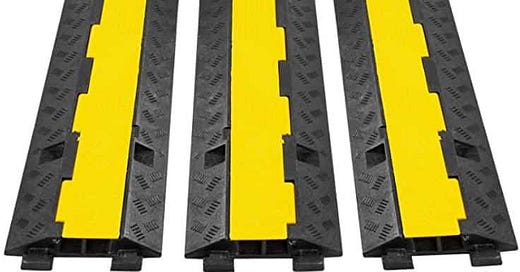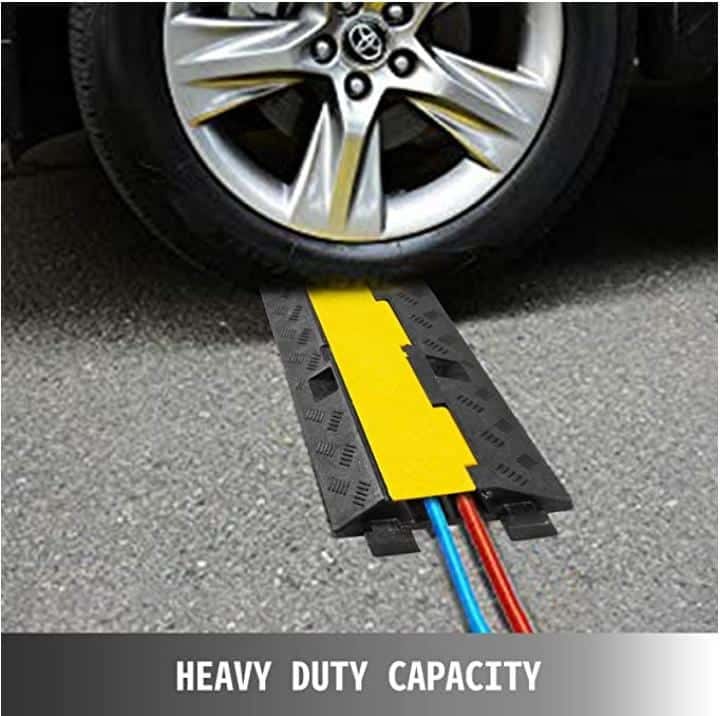Dear Mike,
While watching the news here in northern California they were showing a RVer using his RV generator to power his and neighbors’ homes. There were power cords laying across the street and I’m not sure this happens but i would expect cars drive across the cords.
I’m hoping the cords are the proper gauge for the load and distance. Bu it would seem to me to be a bad idea to have cords unprotected from car tires like that. Shouldn’t a cord cover of some sort be used? —Tom Hart
Dear Tom,
Yes, you are 100% correct. It’s a very bad idea to be driving vehicles over unprotected extension or shore power cords, especially on asphalt or concrete. Doing so will cause the wiring insulation to collapse and begin to break the strands of copper wire. Eventually you’ll have a short circuit or a fire from overheating, neither of which is good. So protecting your cables from traffic is important.
Enter the Yellow Jackets
When I used to do rock music shows where we had to run power and signal wires through the crowd and over driveways, we also brought along cable ramps called “Yellow Jackets,” named so because they were always black and yellow for visual warning.
While these used to be terribly expensive to purchase (considering I would sometimes need 150 feet or more of cable coverage), the new generation of mid-duty cable ramps are pretty affordable, with a 3-pack of 40″ ramps (or 10 ft. worth) costing about $60 delivered.
Protect your cables from tire damage
You need to protect your cables from this sort of damage. So it’s best to get your power wires into some sort of protective cable ramp that will prevent them from damage. As you can see from the picture, the cables are nestled in their own little compartment which can be driven over with most vehicles.
These particular cable ramps are rated for vehicles up to 11,000 lbs. per axle, which should be good for most traffic. Now, I’m not recommending these particular ramps for placement across a busy highway or intersection. If that’s what they need to do, then the price goes up by a factor of 10x or so for heavy-duty versions that fire trucks and semi-trailers can drive over.
Of course there are cheaper ways to accomplish this same thing by using a pair of 8 ft. 2×4’s with a plywood cover. That’s how we used to build cheap cable ramps for theaters that didn’t have the money for the professional version. I’ll draw up a diagram later on how to make your own on a budget, but in the meantime it’s hard to beat these factory-built cable ramps which get high ratings on Amazon HERE.
OK, everyone. Remember that electricity is a useful and powerful force, so we all need to pay attention to safety precautions while using it.
Let’s play safe out there…. Mike







Mike
I would like to point out that the emergency situation presented in the initial story is a great deal different from your situation where you expect to have the cords used over and over. I am sure that you are too practical to be suggesting that all RVers should carry these large and heavy cord protectors around with them for the rare times they would need them.
I would guess that most of us would approach this simply expecting that the cord would need to be sacrificed, as the most cost effective way of helping a neighbor avoid losing hundred of dollars of food.
That being the case, and having already seen that you prefer a scientific approach to things, when you say the cord will eventually have irreversible changes, what sort of time frame are you taking about before the cord ought to be tossed? What has testing showed? After 1 car goes over it? A day? Week? Or what?